Nose surgery (rhinoplasty) is a popular surgical procedure performed to improve the aesthetic harmony of the face and improve breathing. However, the success of this operation is directly related to the care taken during the post-operative care process. Consciously managing the recovery process after rhinoplasty is very important for faster and smoother recovery.
The First Few Days After Rhinoplasty Surgery
After rhinoplasty, you can usually return home on the same day. Applying cold compresses for the first 24 hours after surgery is an effective method for reducing swelling and bruising. However, mild discomfort, swelling and bruising are considered normal. Swelling may reach its peak on the second and third days, but it will begin to subside within a week.
Initial check-ups are usually performed on the 1st, 4th, and 7th days after surgery. During this process, the condition of the bandages and stitches placed on your nose is checked. If external stitches were used, they are usually removed between 5 and 14 days. Internal stitches, on the other hand, are made of self-dissolving materials, so there is no need to remove them.

Nutrition and Daily Life
After rhinoplasty, it is important to focus on liquid-based foods in your diet. By avoiding solid foods that require chewing, you can avoid putting pressure on the nasal area. In addition, you may experience mild throat pain for the first few days; this condition is usually temporary.
It is also important to limit the movement of the upper lip. Smiling, talking too much, chewing hard foods and brushing your teeth vigorously can negatively affect the healing process of the nose. You should gently clean your teeth with a soft brush.
Physical Activity and Sleep
For the first two weeks after surgery, you should avoid heavy lifting, bending, and physical exertion. Light walking is recommended during this period. More intense exercise can be started after 3-4 weeks, but this period may vary depending on your surgeon’s recommendations. It is also very important to protect your nose from impact or blows.
Keeping your head elevated while sleeping helps reduce swelling and congestion. You can support your head by using two pillows. When washing your hair, avoid wetting the bandages by leaning your head over the sink.
Nose Care
You should avoid blowing your nose and keep your mouth open when sneezing. Applying antibiotic ointment to the nostrils and suture lines reduces the risk of infection. You should also use the nasal sprays recommended by your surgeon regularly. Keeping the bandages dry supports the healing process.
Wearing glasses is not recommended for 6 weeks after surgery, as they may put pressure on the nose. Contact lenses may be preferred during this period.
Long-Term Recovery
Most of the swelling after rhinoplasty subsides within the first 2-4 weeks. However, it usually takes about a year for your nose to reach its final shape. During this period, you should not skip your regular doctor appointments and follow your surgeon’s recommendations.
A careful post-operative care routine speeds up the healing process and ensures a more successful outcome. If you are planning to have rhinoplasty, it is extremely important to discuss all the details of the process with your surgeon and follow their instructions.









